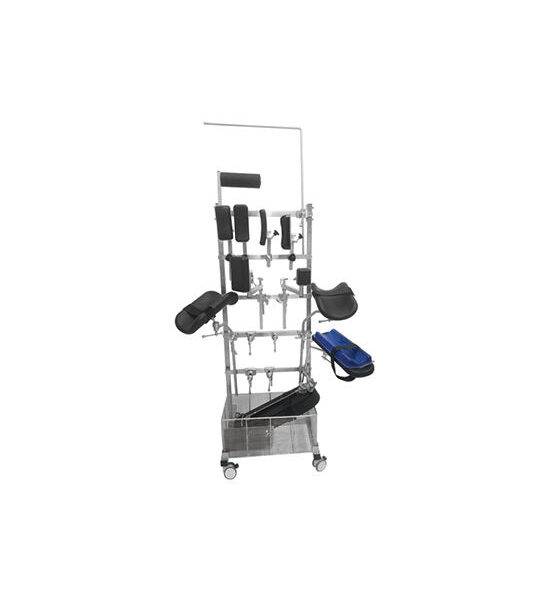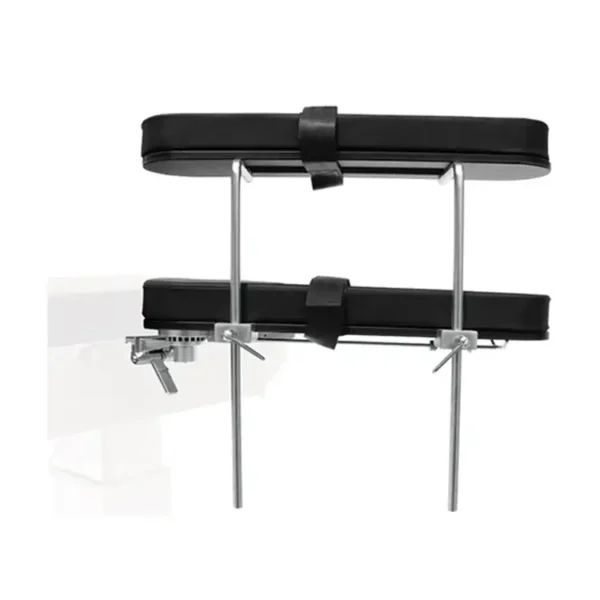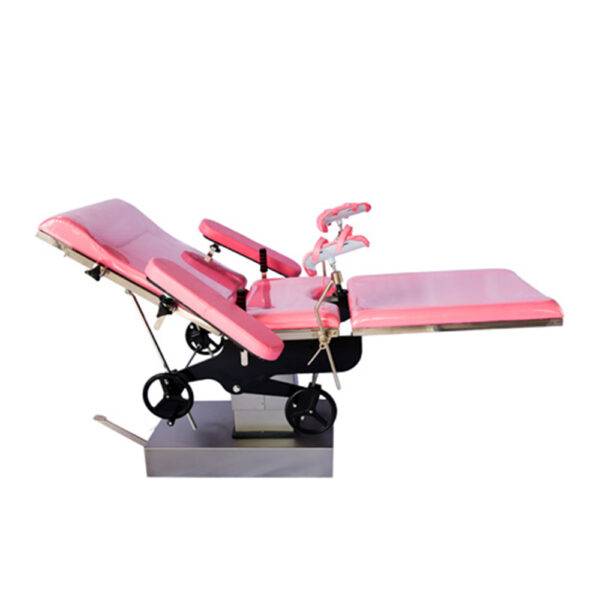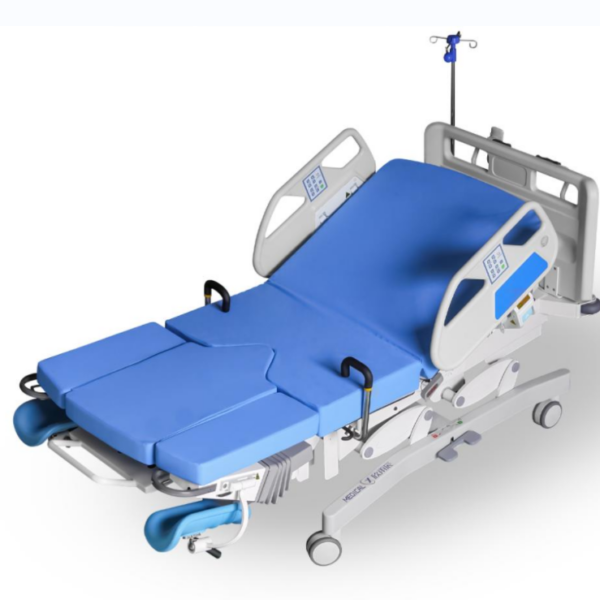Die Anschrift
304 Nordkardinal St.
Dorchester Center, MA 02124
Arbeitsstunden
Montag bis Freitag: 7:00 - 19:00
Wochenende: 10:00 - 17:00
Die Anschrift
304 Nordkardinal St.
Dorchester Center, MA 02124
Arbeitsstunden
Montag bis Freitag: 7:00 - 19:00
Wochenende: 10:00 - 17:00

Operationstische sind der Eckpfeiler jedes Operationssaals und bieten die notwendige Unterstützung und Positionierung, die für eine breite Palette von Operationen erforderlich ist.
Willkommen auf meinem Blog!
Bevor wir uns in die Inhalte vertiefen, würde ich mich freuen, wenn Sie mir auf meinen Social-Media-Plattformen folgen, wo ich weitere Einblicke gebe, mit der Community interagiere und Updates poste. So können Sie mit mir in Kontakt treten:
Facebook:https://www.facebook.com/profile.php?id=100071234835011
LinkedIn:https://www.linkedin.com/company/74943205/admin/dashboard/
YouTube:www.youtube.com/@shandongexpertmedicalequip4695
TikTok:www.tiktok.com/@expertmedical
Lassen Sie uns nun gemeinsam unsere Reise beginnen. Ich hoffe, Sie finden die Inhalte hier aufschlussreich, spannend und wertvoll.

Die Wahl der richtigen Operationstische für Ihr Krankenhaus ist eine wichtige Entscheidung, die die Effizienz chirurgischer Eingriffe und die Behandlungsergebnisse maßgeblich beeinflussen kann. Operationstische sind das Herzstück jedes Operationssaals und bieten die notwendige Unterstützung und Positionierung für eine Vielzahl von Operationen. Dieser umfassende Leitfaden untersucht die verschiedenen Faktoren, die bei der Auswahl der besten Operationstische für Ihr Krankenhaus zu berücksichtigen sind, und stellt sicher, dass Sie eine fundierte und optimale Wahl für Ihre medizinische Einrichtung treffen.
Operationstische dienen der Unterstützung von Patienten während chirurgischer Eingriffe und bieten Stabilität, Verstellbarkeit und Zugänglichkeit. Sie müssen sich an unterschiedliche Patientengrößen und Operationspositionen anpassen und dem Chirurgen gleichzeitig optimalen Zugang zum Operationsfeld ermöglichen. Dieser Abschnitt befasst sich mit der grundlegenden Rolle von Operationstischen für den Erfolg von Operationen.
Bei der Auswahl von Operationstischen ist es wichtig, einige wichtige Merkmale zu berücksichtigen, die zu ihrer Effektivität und Vielseitigkeit beitragen. Zu diesen Merkmalen gehören:









Allgemeine Operationstische sind vielseitig einsetzbar und für ein breites Spektrum an Eingriffen konzipiert. Sie bieten grundlegende Funktionen wie Höhenverstellung, Neigung und Patientenpositionierung. In diesem Abschnitt werden die Eigenschaften allgemeiner Operationstische und ihre Anwendungsmöglichkeiten erläutert.
Spezial-OP-Tische sind für spezielle Operationen wie orthopädische, urologische und neurochirurgische Eingriffe konzipiert. Sie verfügen über spezielle Funktionen, die auf die Bedürfnisse bestimmter chirurgischer Disziplinen zugeschnitten sind. In diesem Abschnitt werden die verschiedenen Arten von Spezial-OP-Tischen und ihre besonderen Eigenschaften vorgestellt.
Bildgebungstische erleichtern die Nutzung bildgebender Geräte bei chirurgischen Eingriffen. Sie verfügen oft über röntgendurchlässige Tischplatten und sind mit C-Bögen und anderen bildgebenden Geräten kompatibel. Dieser Abschnitt beleuchtet die Bedeutung von Bildgebungstischen in der modernen chirurgischen Praxis.


Die Art der in Ihrem Krankenhaus durchgeführten Operationen beeinflusst maßgeblich die Wahl der Operationstische. Berücksichtigen Sie bei der Tischauswahl die chirurgischen Fachrichtungen und die spezifischen Anforderungen dieser Eingriffe. Dieser Abschnitt bietet Hinweise zur Anpassung der Tischfunktionen an die chirurgischen Anforderungen.
Budgetbeschränkungen gehören für die meisten Krankenhäuser zur Realität. Die Investition in einen hochwertigen Operationstisch ist zwar wichtig, die Wirtschaftlichkeit ist jedoch ebenso wichtig. In diesem Abschnitt erfahren Sie, wie Sie Qualität und Kosten in Einklang bringen, einschließlich Finanzierungs- und Leasingoptionen.
Die räumlichen Gegebenheiten und die Gestaltung Ihrer Operationssäle beeinflussen die Wahl der Operationstische. Achten Sie darauf, dass die ausgewählten Tische leicht manövriert und im verfügbaren Raum positioniert werden können. Dieser Abschnitt bietet Tipps zur Optimierung der Operationssaalgestaltung für maximale Effizienz.
Die Wahl eines renommierten Herstellers mit nachweislicher Erfolgsbilanz ist entscheidend für die Qualität und Zuverlässigkeit Ihres Operationstisches. In diesem Abschnitt wird die Bedeutung des Herstellersupports, einschließlich Garantien, Wartungsleistungen und Kundenbewertungen, erläutert.
Ergonomie spielt eine entscheidende Rolle bei der Reduzierung von Ermüdung und der Verbesserung der Effizienz von Operationsteams. Ergonomisch gestaltete Tische können den Komfort und die Leistung des Chirurgen verbessern. Dieser Abschnitt befasst sich mit den ergonomischen Aspekten bei der Auswahl eines Operationstisches.
Um Ihnen eine fundierte Entscheidung zu ermöglichen, finden Sie hier eine Vergleichstabelle mit den wichtigsten Merkmalen verschiedener Arten von Operationstischen:
| Besonderheit | Allgemeine Operationstische | Spezial-OP-Tische | Bildgebungstische |
|---|---|---|---|
| Verstellbarkeit | Hoch | Variable (spezialisiert) | Mäßig bis hoch |
| Gewichtskapazität | 500 lbs – 700 lbs | 400 lbs – 1000 lbs | 500 lbs – 700 lbs |
| Bildkompatibilität | Begrenzt | Spezialisiert (variiert) | Hoch (röntgendurchlässige Oberseite) |
| Haltbarkeit | Hoch | Hoch | Hoch |
| Spezielle Funktionen | Basic | Ja (hängt von der Fachrichtung ab) | Ja (Bildgebungsunterstützung) |
Diese Tabelle bietet einen schnellen Vergleich der wesentlichen Merkmale verschiedener Arten von Operationstischen und hilft Ihnen bei der Beurteilung, welcher Typ am besten für die Anforderungen Ihres Krankenhauses geeignet ist.
(1).jpg)
Regelmäßige Wartung und Inspektionen sind entscheidend für die optimale Leistung von Operationstischen. Dieser Abschnitt beschreibt einen Wartungsplan und wichtige Inspektionspunkte, um Ihre Tische in einwandfreiem Zustand zu halten.
Eine umfassende Schulung des OP-Personals in der Bedienung und Wartung von Operationstischen ist entscheidend für deren effektive Nutzung. In diesem Abschnitt wird die Bedeutung von Schulungsprogrammen und Weiterbildung zur Sicherstellung der Kompetenz des Personals erläutert.
Im Laufe der Zeit kann es notwendig werden, OP-Tische zu modernisieren oder auszutauschen, um mit dem technologischen Fortschritt und den sich ändernden chirurgischen Anforderungen Schritt zu halten. Dieser Abschnitt enthält Richtlinien zur Aufrüstung Ihrer Ausrüstung.
Auswahl der Besten Operationstische Die Auswahl Ihres Krankenhauses erfordert die sorgfältige Berücksichtigung verschiedener Faktoren, darunter die Art der durchgeführten Operationen, Budgetbeschränkungen und die spezifischen Bedürfnisse Ihres OP-Teams. Indem Sie die Bedeutung von Operationstischen verstehen, verschiedene Typen und Funktionen vergleichen und bewährte Verfahren für Wartung und Personalschulung befolgen, können Sie sicherstellen, dass Ihr Krankenhaus mit Tischen ausgestattet ist, die die Operationseffizienz und die Patientenergebnisse verbessern.
Bei der Auswahl von Operationstischen sind wichtige Merkmale zu berücksichtigen, darunter Einstellbarkeit, Gewichtskapazität, Bildkompatibilität, Haltbarkeit und spezielle Funktionen für verschiedene Arten von Operationen.
Operationstische sollten regelmäßig gemäß den Herstellerrichtlinien gewartet werden. Routineinspektionen und -wartungen sollten mindestens vierteljährlich und detailliertere Kontrollen jährlich durchgeführt werden.
Während allgemeine Operationstische vielseitig sind und für viele Arten von Operationen verwendet werden können, können für bestimmte Spezialverfahren Spezialtische mit spezifischen, für diese Operationen entwickelten Funktionen erforderlich sein.
Die Lebensdauer eines Operationstisches kann je nach Nutzung, Wartung und Qualität variieren. Im Allgemeinen hält ein gut gepflegter Tisch zwischen 10 und 15 Jahren.
Bildgebungstische sind speziell für den Einsatz bildgebender Geräte bei chirurgischen Eingriffen konzipiert. Im Gegensatz zu herkömmlichen Operationstischen verfügen sie häufig über röntgendurchlässige Tischplatten und sind mit C-Bögen und anderen bildgebenden Geräten kompatibel.